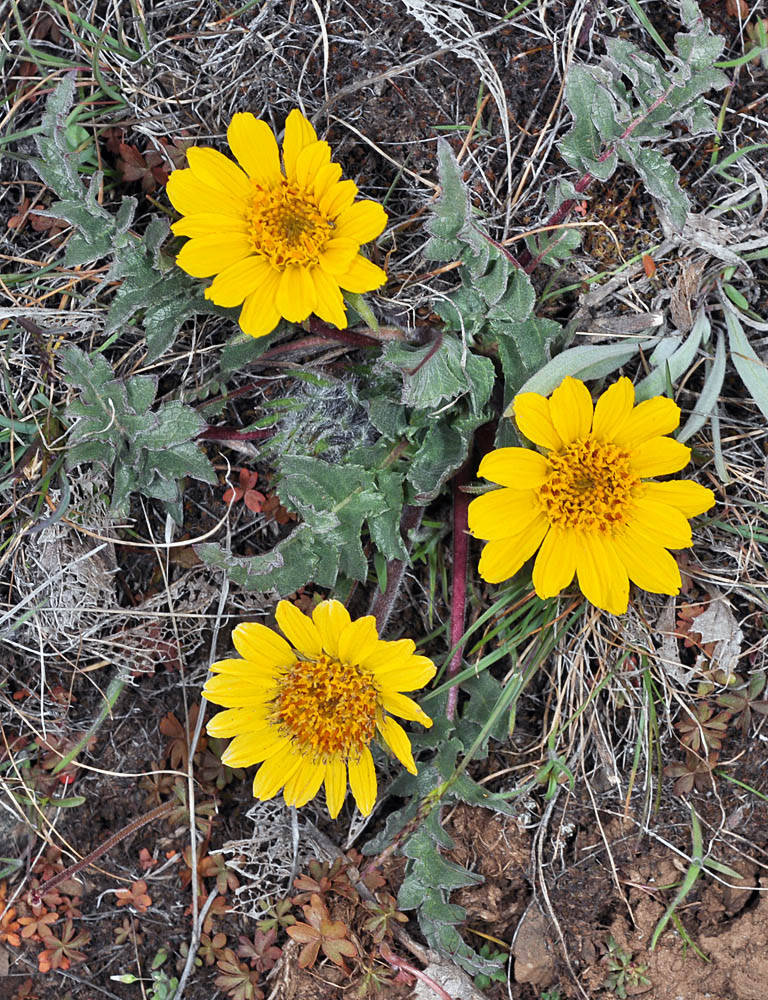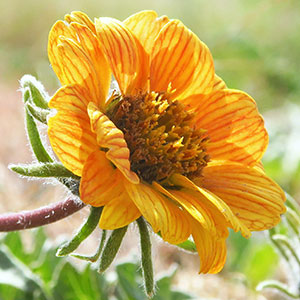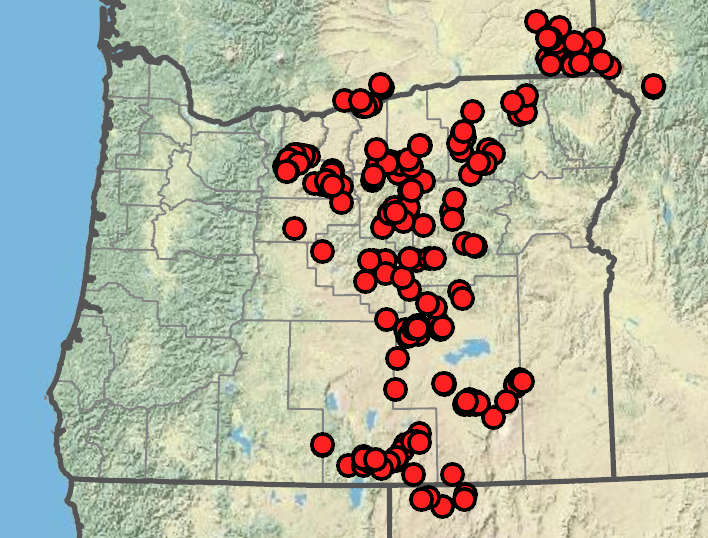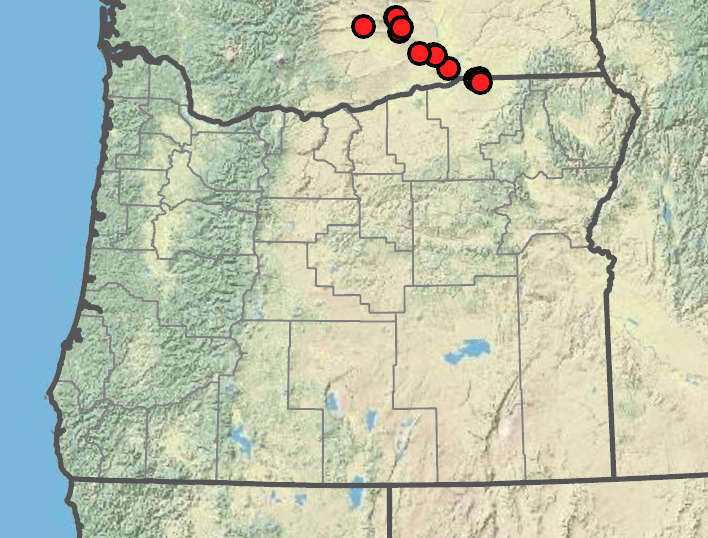Balsamorhiza serrata
Balsamorhiza rosea
serrate balsamroot
rosy balsamroot
5–34 cm, sparsely villous-tomentose; from single taproot.
5–15 cm, villous-hirsute to villous below heads; from single taproot.
ovate-lanceolate, undivided to pinnatifid, rarely with some leaves pinnately compound;
margins sharply serrate;
tips apiculate;
surfaces sparsely hispid;
basal leaves in 1–few rosettes;
blades 4.5–15 × 2–5.5 cm;
pinnae (when present) 4–11 mm wide;
petioles 1–9(13) cm, often one or more bract-like basal leaves present;
cauline leaves of 1 pair (when present); opposite;
blades 1–4(5.5) × 0.6–1.5 cm;
petioles 2–5.5(6.5) cm.
oblong-lanceolate, pinnately lobed from ¼ to ??? to midrib, occasionally some leaves undivided;
margins toothed to crenate with pointed teeth;
surfaces villous-hirsute; more densely so abaxially than adaxially;
basal leaves in 1–few rosettes;
blades 2.5–7 × 1.5–2.8 cm;
pinnae 6–12 mm wide;
petioles 1.5–4.5 cm;
cauline leaves in 1 opposite pair or 0;
blades 0.7–2 × 0.3–1 cm;
petioles 3–4 cm.
with 1 terminal head.
with 1 terminal head.
13–15 × 10–30 mm.
10–13 × 20–25 mm.
8–21, yellow;
rays 13–24 × 4–9 mm.
~13, yellow when young, turning from yellow to pink or red;
rays 10–15 × 7–8 mm.
~8 mm.
~6 mm.
linear-lanceolate, 11–18 × 2–4 mm;
tips acuminate, sparsely to densely villous-tomentose.
linear to linear-lanceolate, 12–15 × 1–2 cm, villous.
6–7 × 1.5–2 mm, glabrous.
5–6 mm, strigillose.
11–12 mm.
11–13 mm.
=38.
Balsamorhiza serrata
Balsamorhiza rosea
Dry open areas, serpentine. Flowering Apr–Jun. 600–2100 m. BR, BW, Col, ECas, Lava. CA, NV, WA. Native.
Balsamorhiza serrata is distinct among members of the genus Balsamorhiza in generally having simple leaves with serrate margins and tapered (not sagittate) bases. Some plants have pinnately divided leaves. Further work may show that these plants are actually hybrids between B. serrata and B. hookeri or B. hispidula. Balsamorhiza serrata is known to hybridize with B. sagittata.
Open, rocky areas. Flowering Apr–May. 300–400 m. Col. WA. Native.
Balsamorhiza rosea occurs almost entirely in Washington, with one known locality in Oregon.
Abigail (Abby) Moore
Abigail (Abby) Moore





